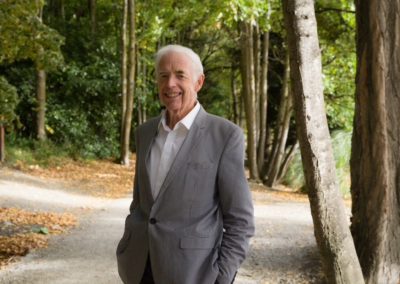A recent study undertaken in Auckland concluded that while there is a moderate level of community stroke knowledge overall, this varies by ethnicity, and stroke awareness levels amongst Māori are particularly low. With the Māori population living longer, and thus increasingly suffering from neurological conditions, we need health services and interventions that recognise the unique needs of this community.
In previous research that Dr Karen Brewer (Whakatōhea– Ngai Tamahaua, Ngaiterangi – Tauwhao) had done in Ōpōtiki in the Bay of Plenty, she found that for many Māori, conventional healthcare simply does not work – partly because it is hard to access, but mostly because the services offered are not what Māori need. She also recognised that there was an incredible expertise in the community and a determination to take matters into their own hands.
The idea for the research project “Te Tino Rangatiratangao te Mate Ikura Roro” came from one of Karen’s research participants. “You know, I as a stroke survivor would like to help other people recently diagnosed as stroke survivors through my own journey,” he said. “So make it happen!” The ultimate aim of the project was to develop a community-led peer support system for Māori who have suffered a stroke and to enable Māori to claim tino rangatiratanga over their own lives.

The project is firmly grounded in te Ao Māori: It is community-led and the entire research team is Māori. Prof.Suzanne Purdy (Te Rarawa) is lead investigator, while Te Whaawhai Taki (Whakatōhea – Ngāti Patumoana) carries out the majority of the research for her Master’s degree at Te Whare Wānanga o Awanuiārangi. She is supervised by Suzanne, Karen (University of Auckland) and Prof. Virginia Warriner (Ngāti Whātua, Ngāti Porou) from Te Whare Wānanga o Awanuiārangi, making this project a multi-institutional partnership. They have also formed a Hunga Akoranga Mātauranga, a group that advises on academic aspects, and a Kāhui Mātauranga Māori, who ensure that the research follows tikanga Māori.
After receiving funding from Brain Research New Zealand, Whaawhai took the topic to the community by attending hui, taking speaking opportunities, and engaging with Whakatōhea and surrounding iwi (Ngāti Awa, Ngāi Tāhoe, Ngāi Tai, Te Whānauā-Apanui). As Māori have historically suffered from being misinterpreted through research, it took a while for trust to be formed. But Whaawhai kept showing up and finally, work could begin. The team developed a questionnaire targeted at stroke survivors, their whānau, and health providers, to find out what was locally known about stroke. Initially, the people were not happy. “You’re asking the wrong things,” they said. “You’re not asking the things we want to know.” So the researchers amended the survey to reflect this feedback and to ask questions in a way that was acceptable to the community.

The results showed a need for stroke education and for funding to develop resources. In a way, the answers are there already – the people know what they need. “This is where te tino rangatiratanga comes in,” Karen says. “We can do it ourselves. We know what’s best for us, we have the knowledge,the skills. We just don’t have the resources to do it.” The researchers concluded that they need a place in Ōpōtiki, a‘home’ for stroke survivors and their whānau, independent fromother providers. They want to create a tikanga Māori based intervention programme designed by and for stroke survivors and their whānau, and employ stroke survivors and their whānau to deliver it. Further, developing an education plan is imperative, Whaawhai says: “Māori are renowned orators – we need to develop this skill and put our own people into the community to talk about symptoms.”
A lot of work lies ahead, but the community and the research team are eager to get something off the ground as soon as possible. “Our vision is to find a way to pilot this community initiative that has the ability to adapt to community needs,” Suzanne says. “It could be an exemplar of something that could be facilitated in other rural places around the country, a model that could work for other neurological conditions as well.”



